Managing PPC used to mean late-night bids, spreadsheet battles, and constant guesswork. But in 2025, AI-powered automation is transforming how marketers run ads—improving efficiency, accuracy, and ROI. Here’s exactly how it works.
Table of Contents
What You’ll Learn
- Where AI delivers the most PPC value today
- What tasks you can (and should) automate
- How to combine automation with smart human input
- Real-time BrightBid features in action
- A case study with 216% ROAS uplift
Audit your ads for free
AI in PPC: From Guesswork to Performance
AI doesn’t eliminate PPC marketers—it amplifies them.
According to industry data:
- Businesses using AI in PPC see up to 20% more conversions
- 46% report revenue growth
- Teams save time while increasing return on ad spend (ROAS)
TL;DR: Let AI optimize execution. You focus on strategy.
1. AI-Driven Bidding for Smarter Conversions
Forget manual bids. AI-powered strategies like Target CPA and Maximize Conversions adjust bids in real time based on user behavior, device, time of day, and intent.
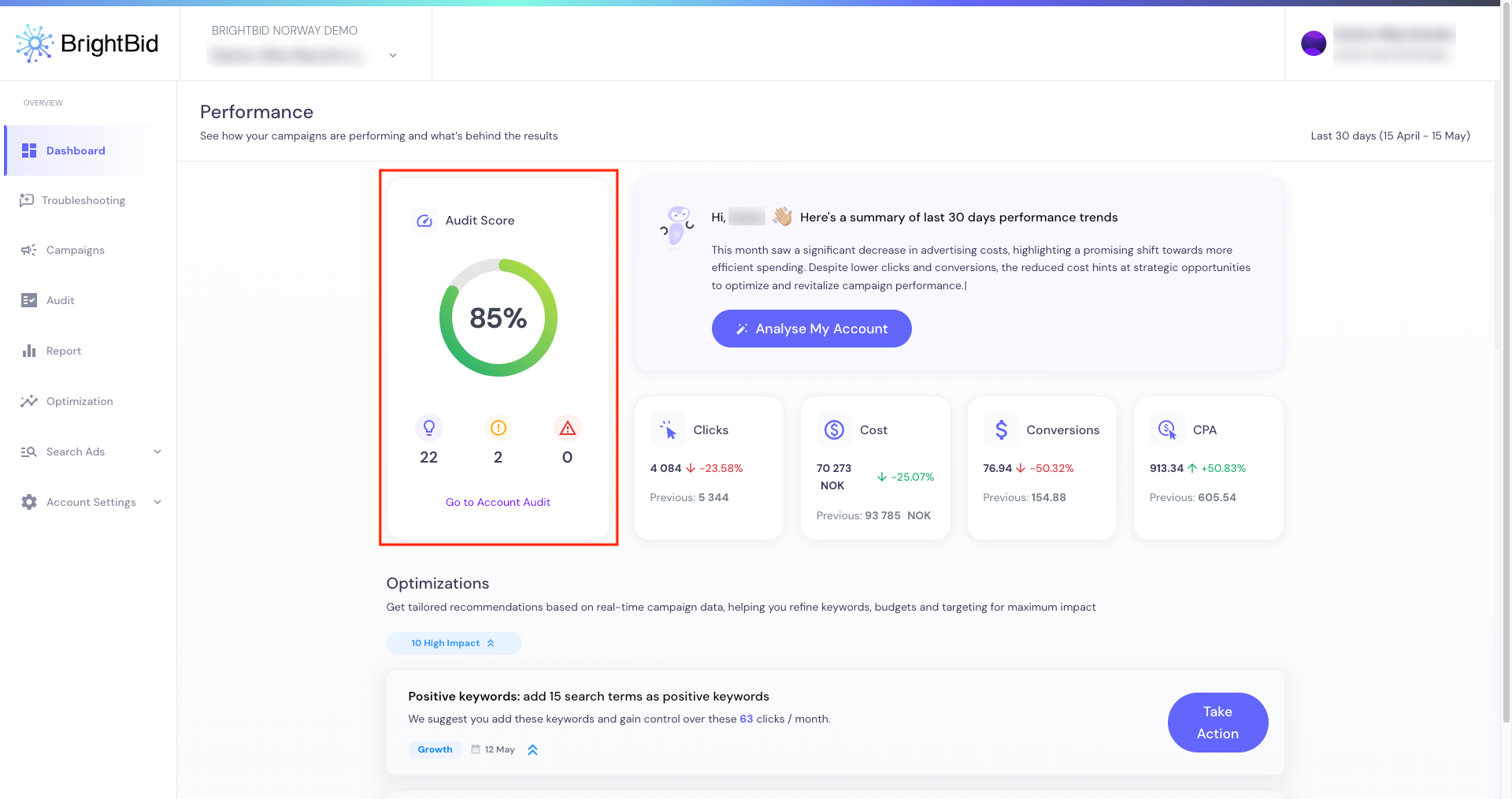
BrightBid Insight: The platform continuously audits your bidding structure and flags when strategies aren’t aligned with conversion goals. Its Audit Score panel helps you identify risks before spend is wasted.
2. Smarter Audience Targeting
AI can pinpoint high-converting users based on behavioral signals you’d miss. Tools like Google’s Audience Expansion and Microsoft’s In-Market Audiences help you tap into broader, more intent-rich segments.
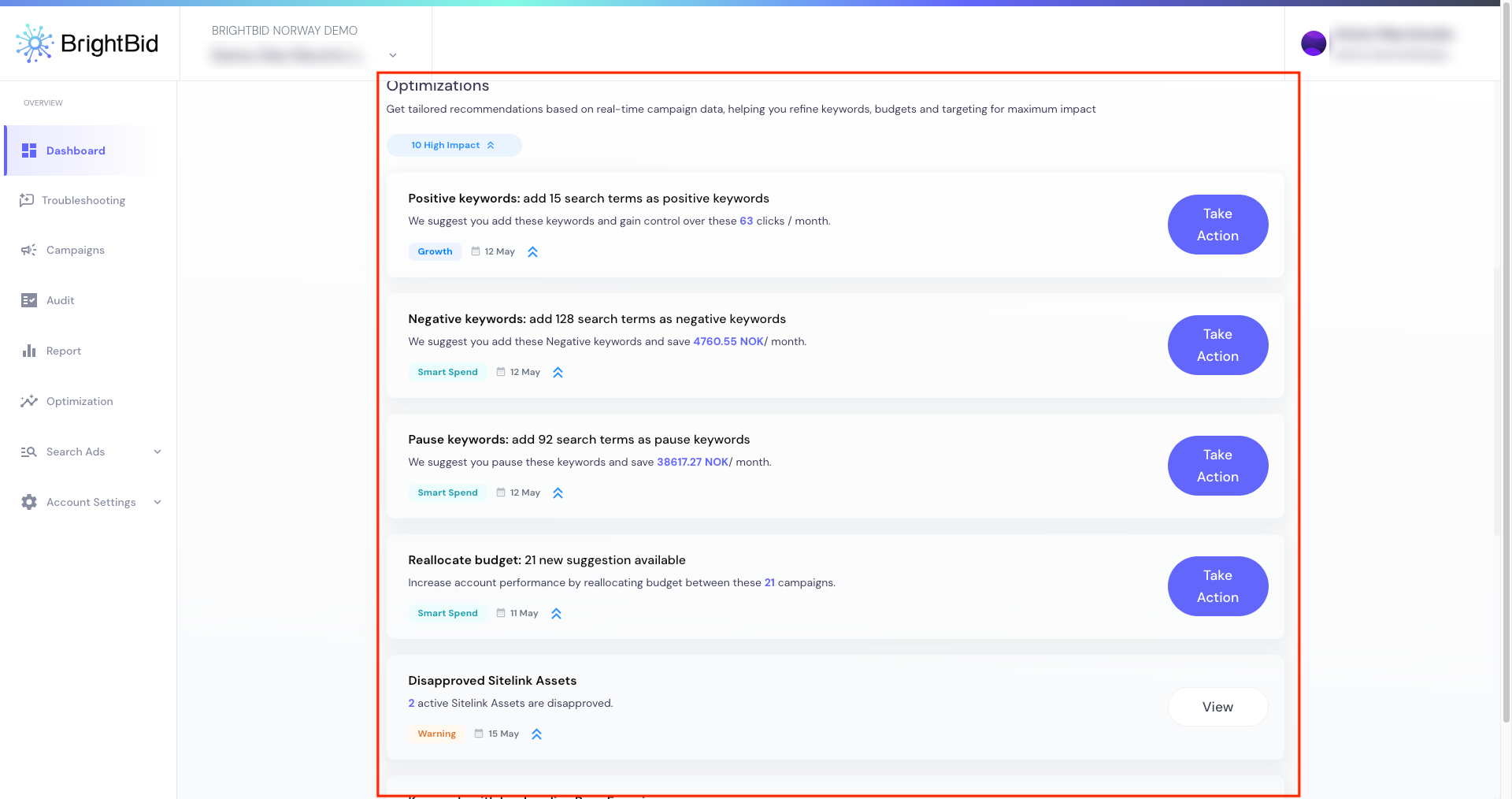
BrightBid’s optimization engine highlights keyword inefficiencies in real time—recommending positive, negative, or paused keywords along with projected impact, like saved spend or gained clicks.
3. Responsive Ads That Self-Optimize
Responsive Search and Display Ads use AI to automatically test multiple headlines, descriptions, and creative combinations—delivering the best version of your ad for each user.
You no longer need to guess what copy converts. Let the algorithm surface it.
4. Dynamic Search Ads for Long-Tail Gains
DSAs automatically pull ad headlines from your website and match them to long-tail, high-intent searches. They expand your reach without increasing management time.
It’s a low-effort way to appear for keywords your competitors might overlook.
5. AI-Powered Budget Allocation
AI helps you stop overspending on underperforming campaigns and reallocates funds to what’s working.
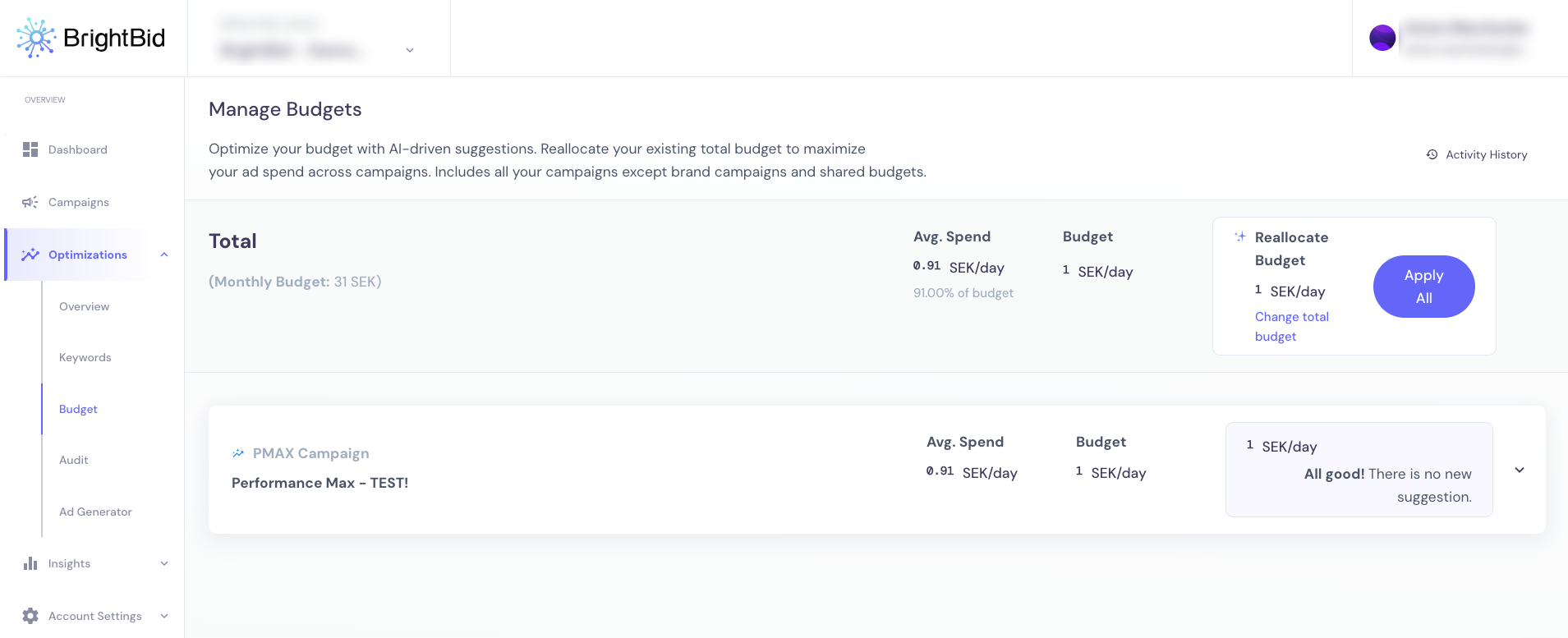
BrightBid Feature: The budget reallocation scans campaign data and makes recommendations across accounts—e.g., “shift budget from Campaign X to Campaign Y to improve ROAS.” Click “Apply All” and you’re done.
6. Competitive Edge with Third-Party AI

While Google and Microsoft offer built-in automation, third-party AI tools like BrightBid offer a strategic edge:
- Advanced rule-based optimizations
- Cross-platform performance tracking
- One-click recommendations with savings/click impact shown
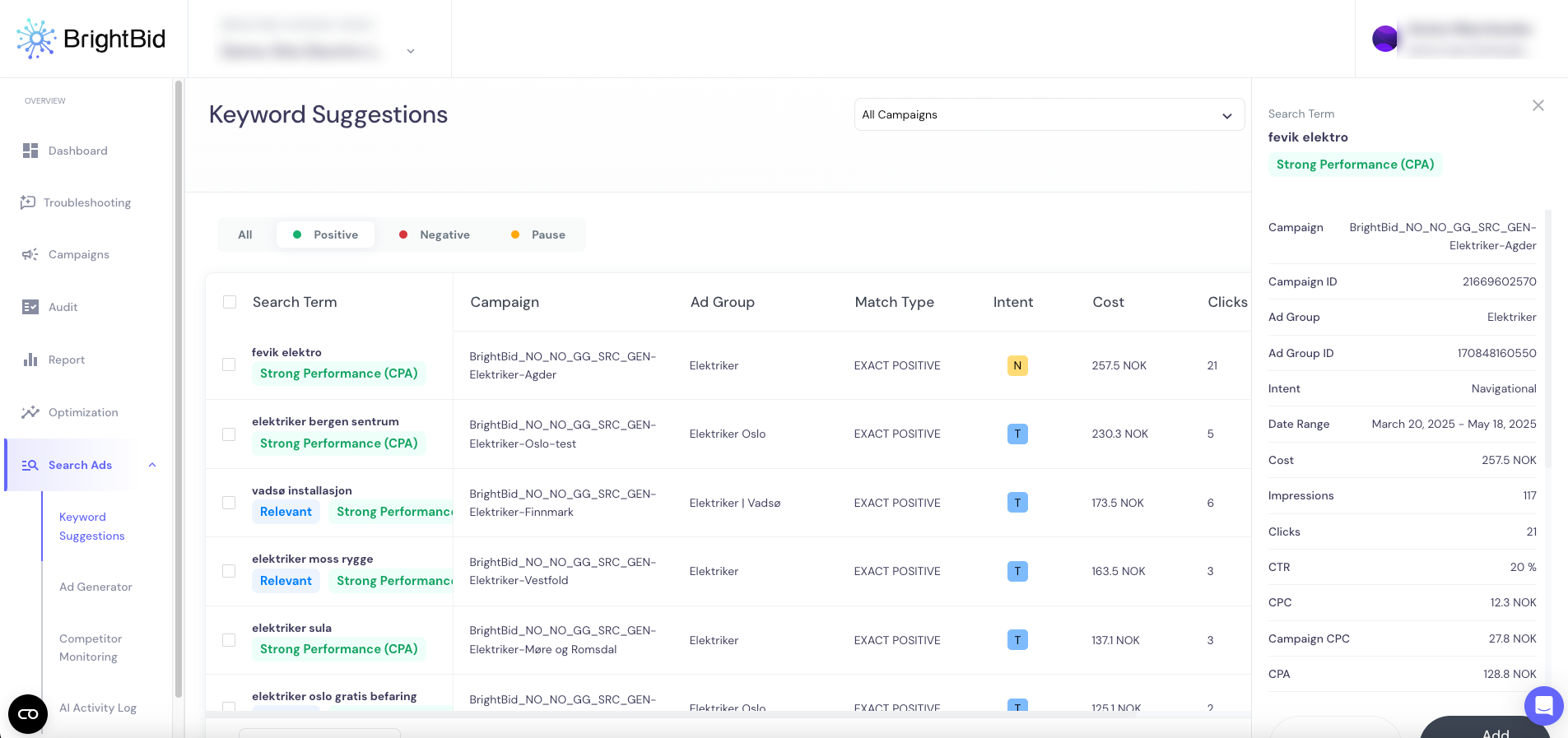
Example: BrightBid’s keyword engine doesn’t just guess—it shows potential monthly savings for paused and negative keywords and projected clicks for positives.
7. Automated Ad Scheduling & Rules
AI helps you determine the best time to show ads, based on conversion trends. It can also automate actions like:
- Pausing low performers
- Boosting bids during peak times
- Sending alerts if CPAs spike
BrightBid adds another layer by combining historical trends with audit rule logic to flag time-based inefficiencies—before they become costly.
8. Smarter Keyword Management
AI tools now help you:
- Add new converting keywords
- Pause low-intent search terms
- Add negatives based on cost or poor quality

BrightBid’s interface simplifies this with labeled suggestions:
- 🔵 Growth
- 🟢 Smart Spend
- 🟠 Warnings
- 🔴 Urgent
9. Ad Creative Optimization with AI
Beyond responsive formats, AI helps generate copy ideas based on:
- Real engagement trends
- Audience segmentation
- Competitor positioning
It’s not just automation—it’s insight-driven iteration.
10. Case Study: AI in Action
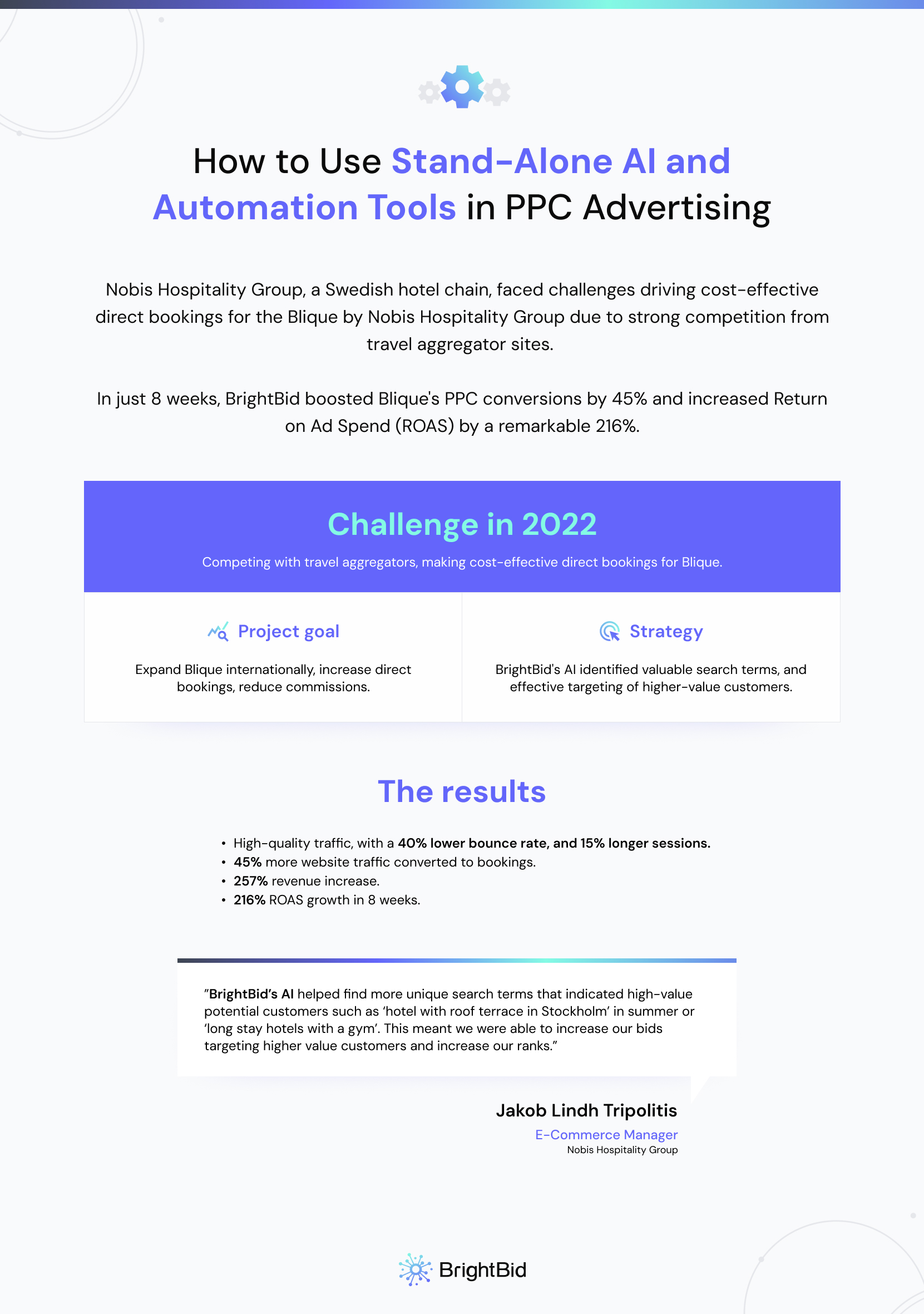
Nobis Hospitality Group, a Swedish hotel chain, used BrightBid to:
- Increase direct bookings by 45%
- Improve ROAS by 216%
- Reduce dependency on aggregator sites
How? By letting BrightBid handle bidding, keyword pruning, and budget shifts—while the internal team focused on seasonal strategy.
“BrightBid helped us reallocate spend and act on performance in real-time, without waiting for end-of-month data dumps.”
Bonus: See Your PPC Health Instantly
Want to know if your campaigns are running at peak efficiency?
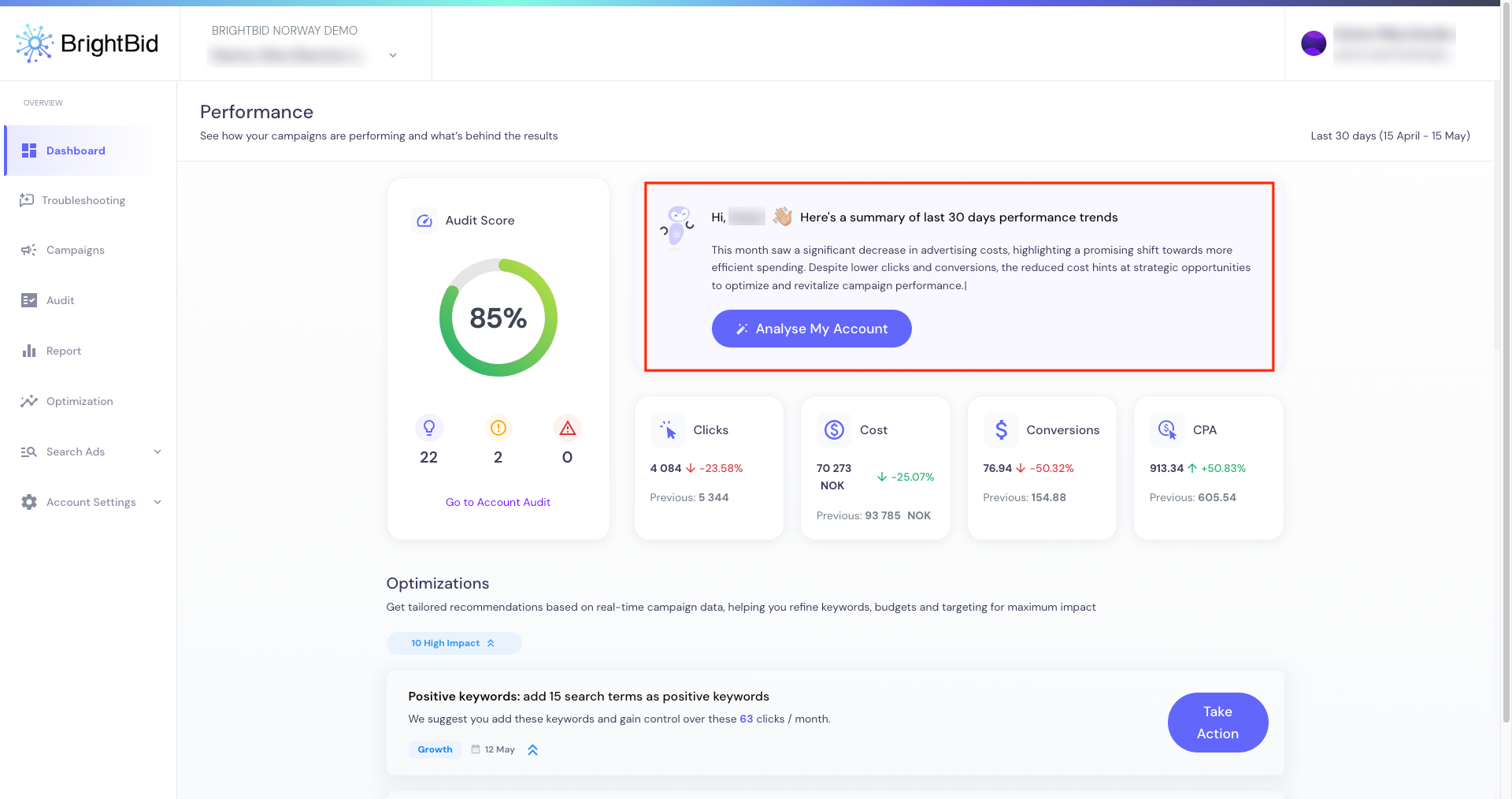
BrightBid gives you:
- A real-time Audit Score
- 60+ automated health checks
- Spend-saving keyword suggestions
- AI-powered budget optimizations
Recap: AI + Humans = Sustainable Growth
AI makes your PPC stack faster and smarter—but it’s not a replacement for strategy. The best campaigns in 2025 are:
- Automated for speed
- Audited for health
- Managed with insight
- Optimized by AI, led by marketers
Ready to Scale Your PPC With AI?
BrightBid helps you:
- Run smarter campaigns
- Reduce wasted spend
- Reclaim time from micromanagement
 ” />
” />
 ” />
” />
 ” />
” />
 ” />
” />
 ” />
” />
 ” />
” />